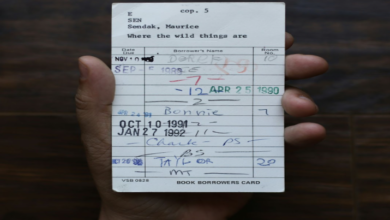Common Mistakes People Make When Using an Embossing Machine

Many people get into embossing without knowing what their machine handles best. It’s easy to assume that every embossing machine works the same way. One quick scroll online shows a huge range in size, shape, and capability.
Some machines handle industrial-grade sheets while others focus on delicate, intricate tags or labels. Forcing a handheld tool to work like a heavy-duty one leads to all kinds of problems. The machine jams, the pattern shifts, and the results? They usually disappoint.
Rushing Through Setup Without Reading or Testing the Embossing Machine
Skipping over the setup steps causes most of the problems. Sure, instructions may seem boring, but skipping them creates uneven lines, off-center results, or even tool damage.
Professionals take a few minutes to test the machine before using it for actual work. That small test run on a scrap sheet saves hours of regret. Still, people skip it, thinking they already “know how it works.” That thinking leads straight into trouble. Next time, slow down. Set it up. Do a test. Adjust as needed. That small effort saves a whole batch.
Choosing the Wrong Materials for the Job
Some metals respond beautifully, while others crack, dent, or distort. A common mistake happens when people pick a sheet or tag that’s too hard or too soft for their embossing machine. So, before embossing, think through the material:
- What kind of metal are you using? (aluminum, brass, copper, stainless steel)
- Does the thickness fit your machine’s range?
- Will this sheet respond well to the pressure?
Machines from Short Order Products handle all these variables with ease. Their equipment handles various metals and sheet thicknesses, from light foil to sturdy plates.
That flexibility cuts out a lot of trial and error, and it keeps projects moving forward.
Ignoring Alignment and Pressure Settings
Nothing feels worse than embossing a full sheet and then seeing the entire pattern tilted or pressed too lightly. Alignment issues pop up more often than people expect. So, whether the material slips or the dial gets off-center, the results can end up crooked and frustrating.
Some users crank up the pressure from the start, not realizing that too much pressure causes permanent damage. That aggressive approach presses the design too hard or even breaks the metal entirely. So, here are a few checks that make a big difference:
- Line up the material before every run
- Don’t assume yesterday’s pressure setting works today
- Start light, then gradually increase pressure
See also: Unlocking Bookkeeping Secrets for Business Growth Tech Trends Gfxprojectality
Forgetting to Clean and Maintain the Machine
Neglecting basic maintenance causes more issues than people realize. Whether using a tabletop unit or a compact embossing machine, every model works better with regular care. Dust, debris, and tiny metal scraps clog the system and throw off the pressure and design over time. Slipping plates and uneven patterns show up fast when users ignore routine care. That smooth machine suddenly produces weak or jagged impressions. You can avoid those issues with a few habits:
- Wipe the plates clean after each use
- Lubricate moving parts if the manual says so
- Store the accessories and machine properly
Not Upgrading When the Project Demands More
Sometimes, users don’t make mistakes with the machine. They make mistakes by using the wrong one for the job. A simple hobby often turns into professional work. Yet, many stick with the same beginner tool, even when the workload demands more.
Therefore, starting with basic tools makes sense. The DYMO Rhino Handheld from Short Order Products works great for simple tags or one-off jobs. However, daily industrial tagging or heavy plate embossing needs a stronger embossing machine.
Misunderstanding the True Purpose of Embossing
Another common mistake comes from misunderstanding what embossing actually does. It’s not just about making something look better. Embossing marks items for durability, tracking, branding, and identification.
When people treat embossing like just a decorative step, they often ignore the bigger uses. These machines go beyond looks. They help with asset tags, serial numbers, barcoding, signage, and even industrial inventory systems.
Final Thoughts!
Mistakes will happen, and that’s part of learning any tool. However, when it comes to using an embossing machine, knowing what to avoid becomes just as powerful as knowing what to do. Choices like using the right materials, testing first, and maintaining the machine make a huge difference in your results. If avoiding these issues sounds like a goal, then starting with the right equipment makes that goal achievable. That’s where Short Order Products delivers. Their carefully selected range includes handheld tools and high-powered machines, built to match the task, whether you’re handling metal tags or commercial signage. So, instead of learning the hard way, take control early. Find a machine that turns your ideas into results and helps every project start with confidence and finish with pride. Contact them today!



